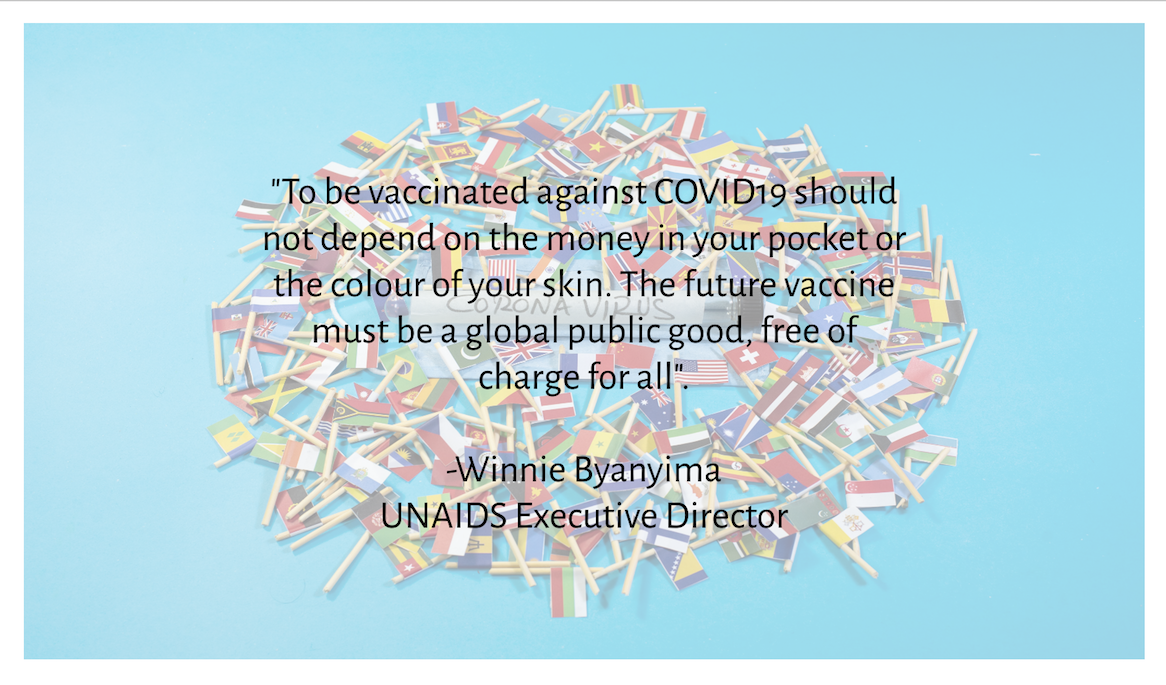Over the last two weeks, news of potential new vaccines to stop the spread of #COVID19 have dominated headlines. Moderna, Pfizer and Astra-Zeneca have all made press-releases about their effectiveness in trials. Chinese firms – such as Sinovac and Sinopharm – are also publicising their trial work to date.
While these are limited, preliminary trials, the response has been huge excitement twinned with concern about the poorest people and countries in the world, who may not get early (if any) access to these drugs, if they are developed as quickly as these trial results suggest. For instance, Pfizer’s vaccine needs to be stored in very low temperatures, conditions which are unlikely to be met in energy-poor African countries. That familiar statistic that the average fridge in the US consumes as much energy as the average person in Africa comes to mind…
Then there is the cost of the vaccine, which – unless the vaccine can be manufactured domestically – governments will likely have to meet using taxes from citizens or grants from other countries. Yesterday, on World Aids Day, the head of UNAIDS Winnie Byanymima, reminded the world what happens when needs for vaccines to address a pandemic are neglected. Prior to COVID19, in 2019, 1.7 million people were newly infected with HIV, and 690,000 people died of HIV-related diseases – the majority of whom were in Africa. Yet, HIV has been around for over 35 years. There is a risk of history repeating itself with COVID19.
How to avoid this?
Our infographic this week reveals that while this dire situation is still entirely plausible, many African countries are doing their best to build an alternative, economically feasible means of living with COVID19. There is still no “mass outbreak” across the continent – Africa as a whole still has considerably less cases than the rest of the world.
However, cases continue to fluctuate in different countries, with some countries trying to manage “second waves”, especially in North Africa, and others simply still doing their best to manage a slowly rising trend, and yet others seeing low case numbers and over 95% recovery rates. This will likely continue into 2021.
But more crucially, for the first time we calculate how much Africa accounts for global testing that has taken so far. The numbers are not encouraging. Despite being on a rising trend, and with testing capacity becoming more widely distributed across countries, Africa as a whole accounts for around 2.2% of all tests done in the world.
What does this mean for vaccine roll out? Can African countries be hopeful? With only 8 countries having sufficient finance in budgets to commit to pre-ordering the vaccine, and only 3 countries on the continent working – with China – to potentially manufacture a vaccine, we are worried African people will be left behind. Very behind.
Check out the graphics and numbers here, and let us know your feedback.

*** The End***
To find out how Development Reimagined can help you, your organisation or Government during the COVID-19 outbreak please email the team at clients@developmentreimagined.com .
Special thanks go to Joana Cobbinah, Rosie Wigmore, Rosie Flowers, and Jing Cai for their work on the graphic and collecting/analysing the underlying data.
The data was collated from a range of sources including: government websites and media reports, the IMF policy tracker; the US Chamber COVID19 Dashboard; Our World in Data, Africa CDC and Worldometer. Our methodology is entirely in-house, based on analysis of spending, social distancing, income categories and other trends.
If you spot any gaps or have any enquiries, please send your feedback to us at DRteam@developmentreimagined.com, we will aim to respond asap.
December 2020


